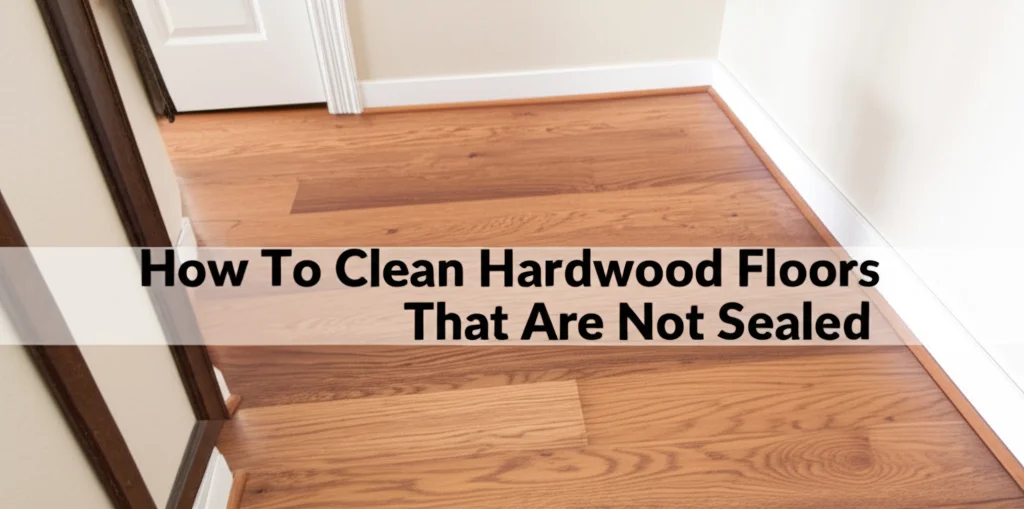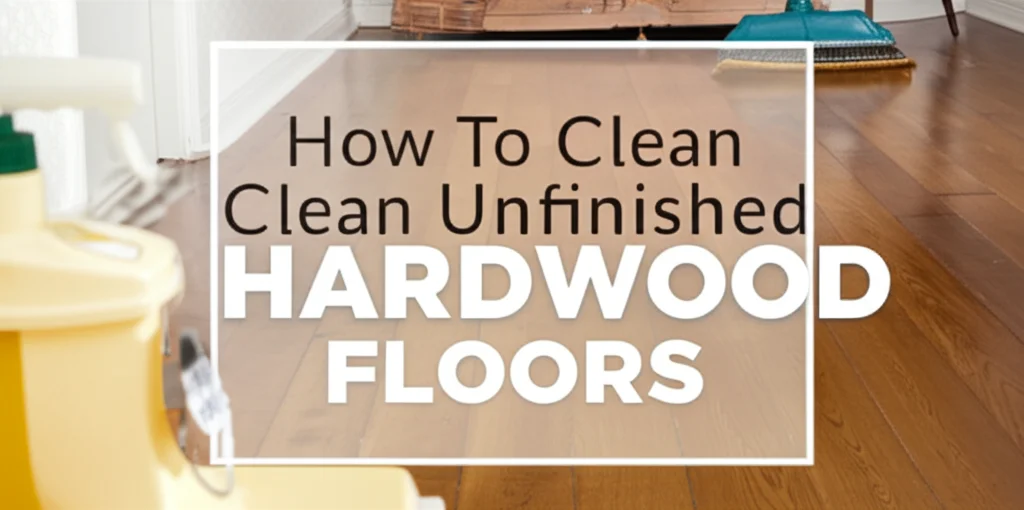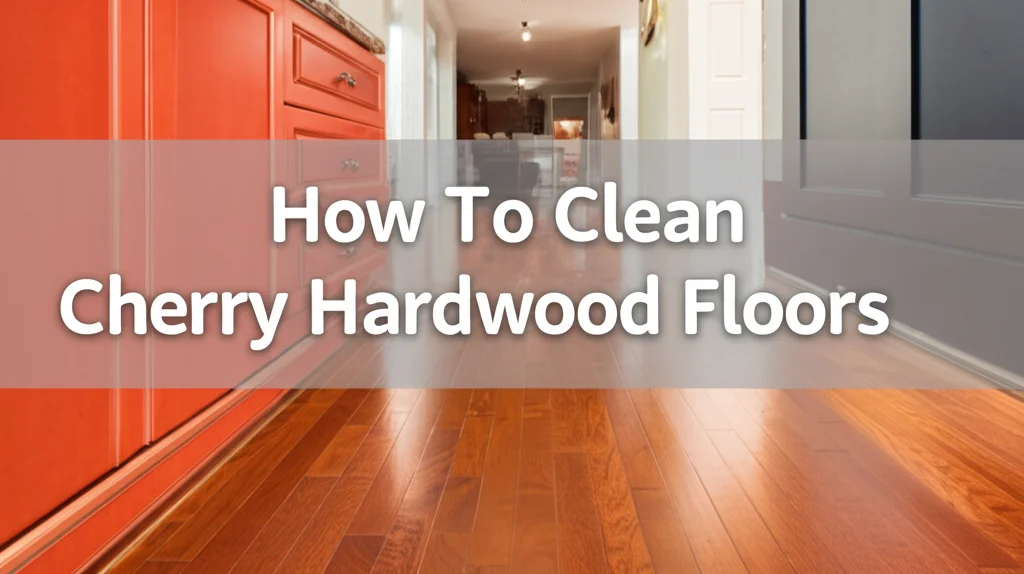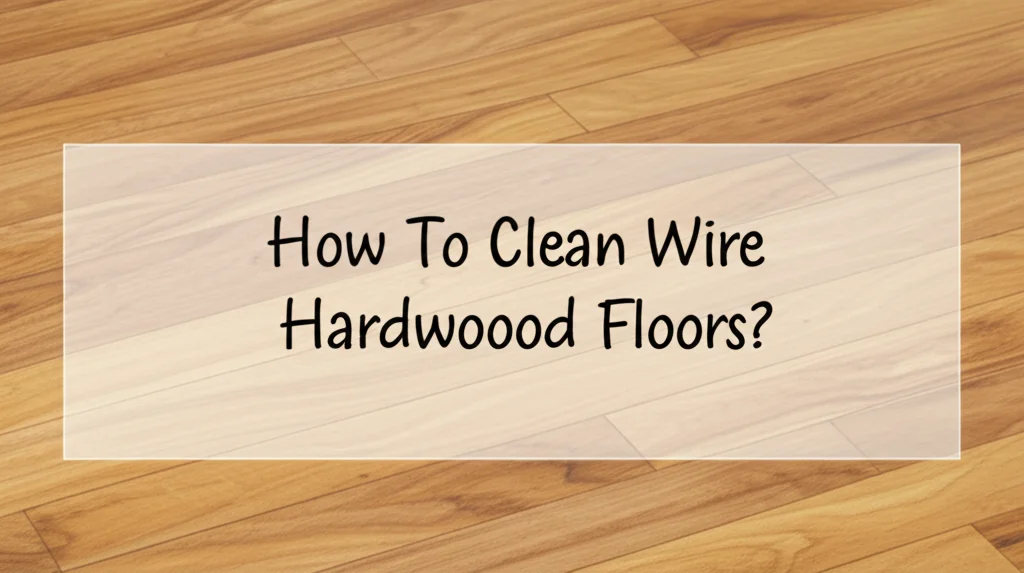· Flooring · 6 min read
How To Clean Hardwood Floors That Are Not Sealed

Cleaning Unsealed Hardwood Floors: A Comprehensive Guide
Have you ever wondered how to properly care for beautiful, yet vulnerable, unsealed hardwood floors? Unsealed hardwood floors offer a rustic charm, but they require a different cleaning approach than their protected counterparts. This article will walk you through everything you need to know about cleaning unsealed hardwood floors, from daily maintenance to tackling stubborn stains. We’ll cover the best methods, what to avoid, and how to keep your floors looking their best for years to come.
Takeaway:
- Use dry cleaning methods as your first line of defense.
- Opt for pH-neutral cleaners specifically designed for wood.
- Avoid excessive water and harsh chemicals.
- Protect your floors with rugs and mats in high-traffic areas.
What’s the best way to clean unsealed hardwood floors?
The key to cleaning unsealed hardwood floors is gentleness. Avoid harsh chemicals and excessive water, as these can damage the wood. Regular sweeping or vacuuming with a soft brush attachment, followed by a damp mop with a pH-neutral wood cleaner, is usually sufficient.
Understanding Unsealed Hardwood Floors
Before diving into cleaning, it’s important to understand what makes unsealed hardwood floors unique. Unlike sealed floors, these floors lack a protective coating, making them more susceptible to water damage, stains, and wear. This means they absorb liquids quickly, and cleaning methods need to be carefully chosen. Knowing this vulnerability will guide your cleaning choices and help you prevent long-term damage.
Why Sealing Matters
Sealing hardwood floors creates a barrier against moisture, dirt, and scratches. Without this barrier, unsealed floors are more prone to warping, discoloration, and the growth of mold or mildew. Consider the benefits of sealing if you’re concerned about long-term durability, but for now, let’s focus on how to care for floors without that protection. You can learn more about protecting your floors by checking out https://www.beacleaner.com/signs-of-mold-under-hardwood-floors-and-how-to-remove-it/.
Identifying Unsealed Floors
If you’re unsure whether your floors are sealed, a simple water test can help. Place a small drop of water on the floor and observe its behavior. If the water beads up, the floor is likely sealed. If it absorbs quickly and darkens the wood, it’s unsealed. This quick test can save you from using the wrong cleaning products and potentially damaging your floors.
Daily & Weekly Cleaning Routines
Consistent cleaning is crucial for maintaining unsealed hardwood floors. A regular routine prevents dirt and debris from grinding into the wood and causing scratches. Let’s break down a simple daily and weekly schedule.
Daily Maintenance: Sweeping & Dusting
Start with a daily sweep or vacuum to remove loose dirt, dust, and pet hair. Use a soft-bristled broom or a vacuum cleaner with a hardwood floor attachment. Avoid using vacuums with beater bars, as these can scratch the surface. This simple step significantly reduces wear and tear.
Weekly Deep Clean: Damp Mopping
Once a week, give your floors a more thorough cleaning with a damp mop. It’s important to emphasize damp – never soak the floor with water. Use a pH-neutral wood cleaner specifically designed for unsealed hardwood. Dilute the cleaner according to the manufacturer’s instructions and wring out the mop thoroughly before applying it to the floor.
Choosing the Right Cleaning Products
Selecting the right cleaning products is paramount when dealing with unsealed hardwood. Harsh chemicals can strip the wood of its natural oils and cause irreversible damage. Here’s what to look for and what to avoid.
Safe Cleaning Solutions
- pH-Neutral Wood Cleaners: These cleaners are formulated to gently lift dirt and grime without damaging the wood.
- Vinegar & Water Solution (Diluted): A very mild solution of white vinegar and water (1/4 cup vinegar to 1 gallon of water) can be used, but use sparingly and test in an inconspicuous area first. You can find more information about using vinegar for cleaning at https://www.beacleaner.com/how-to-clean-hardwood-floors-with-vinegar/.
- Castile Soap: A natural, gentle soap that can be diluted with water for a mild cleaning solution.
Products to Avoid
- Abrasive Cleaners: These can scratch the wood surface.
- Ammonia-Based Cleaners: Ammonia can damage the wood fibers.
- Bleach: Bleach can discolor and weaken the wood.
- Oil-Based Soaps: These can leave a residue that attracts dirt.
Tackling Common Stains on Unsealed Hardwood
Stains are inevitable, but knowing how to address them quickly and effectively can prevent lasting damage. Here’s how to handle some common culprits.
Water Stains
Water stains can appear as white rings or dark spots. For fresh water stains, try gently blotting the area with a clean, dry cloth. For older stains, you may need to lightly sand the area and re-oil it (consult a professional for guidance).
Oil & Grease Stains
Absorb as much oil or grease as possible with a clean cloth or paper towel. Then, sprinkle the area with cornstarch or baking soda and let it sit for several hours to absorb the remaining oil. Vacuum up the powder and gently wipe the area with a damp cloth.
Pet Stains
Pet stains require immediate attention. Blot up the stain with a clean cloth and then clean the area with an enzymatic cleaner specifically designed for pet stains. These cleaners break down the enzymes in the stain, eliminating odors and preventing further damage.
Protecting Your Unsealed Hardwood Floors
Prevention is always better than cure. Taking proactive steps to protect your floors can significantly reduce the need for intensive cleaning and repairs.
Rugs & Mats
Place rugs and mats in high-traffic areas, such as entryways and hallways, to protect the floors from dirt, scratches, and wear. Choose rugs with non-slip backing to prevent accidents.
Furniture Protection
Use felt pads under furniture legs to prevent scratches and dents. Avoid dragging furniture across the floor.
Moisture Control
Maintain a consistent humidity level in your home to prevent the wood from warping or cracking. Use a dehumidifier in damp areas. You might also want to check out https://www.beacleaner.com/how-to-remove-mold-from-shower-caulking/ for tips on controlling moisture.
Frequently Asked Questions (FAQ)
Q: Can I use a steam mop on unsealed hardwood floors?
A: No, steam mops are not recommended for unsealed hardwood floors. The excessive moisture can penetrate the wood and cause warping, staining, and potential mold growth.
Q: How often should I re-oil my unsealed hardwood floors?
A: The frequency of re-oiling depends on the amount of traffic and wear. Generally, re-oiling every 6-12 months is recommended to maintain the wood’s moisture and protect it from damage.
Q: What’s the best way to remove scuff marks from unsealed hardwood?
A: Try rubbing the scuff mark gently with a clean tennis ball or a soft cloth dampened with a small amount of mineral spirits. Test in an inconspicuous area first.
Q: Is it possible to seal unsealed hardwood floors?
A: Yes, it is possible to seal unsealed hardwood floors. However, it’s a significant undertaking that typically requires sanding, staining, and applying multiple coats of sealant. It’s best to consult with a professional flooring contractor.
Conclusion
Cleaning unsealed hardwood floors requires a gentle touch and a consistent routine. By avoiding harsh chemicals, controlling moisture, and using the right cleaning products, you can keep your floors looking beautiful for years to come. Remember, regular sweeping, damp mopping with a pH-neutral cleaner, and prompt stain removal are key. Protecting your investment with rugs and furniture pads will further extend the life of your unsealed hardwood floors. If you’re unsure about any cleaning method, always test it in an inconspicuous area first. Taking the time to properly care for your floors will ensure they remain a stunning feature of your home.




